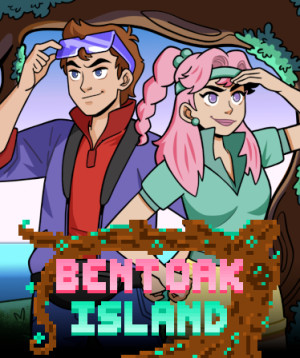Review for Headspun

Have you ever had a conflict with two (hopefully figurative) voices in your head competing over the choices you have made in life? Did I choose the right career path? What if I had taken the job offer years ago instead of staying where I was? If I had married and started a family, where would I be now? Of course you have, and this is the premise of Headspun, the debut adventure game from Superstring Studios, a small indie developer based in the UK. After a serious car accident, it is your job as the inner voice and general manager of the victim’s internal team to get him to the point where he can leave the hospital and resume his life. But to do that you will need to manage many resources and come to terms with your alter ego in a game that defies genres and ends up being a rather uneven experience in the process.
You play as Ted, whom you soon discover is supposed to be in charge of this headspace. Unfortunately, you awaken unable to remember anything with a bandage on your head. There is a display that persists in the top-right corner showing various stats including day, time, location, and some other soon-to-be-revealed indicators. You can move your mouse around the room to find highlighted items, but at the beginning all you can do is select a tie from the closet to wear, with certain options grayed out until later on.
After a brief introduction, you are given the primary task to head to Cortex Control where most of the gameplay occurs. Exiting the room requires clicking on the “Leave” icon at the bottom left of the screen, and you will gradually be given pop-up interface instructions. Side-to-side navigation is via standard WASD keys, with other keystrokes used to interact with objects, hear Ted’s thoughts and get suggestions on what to do next. You can hold the Shift button to walk faster, but it does not save a lot of time and you can miss important hotspots if you rush. Speech balloons appear over your head both during interaction with other characters and periodically elsewhere to provide commentary about what is happening and what Ted is thinking.
The graphics are stylishly hand-painted with lots of purples and blues, with soothing synth music playing quietly and constantly in the background. Sound effects are well done, with realistic versions of doors opening and closing, footsteps as you walk, the elevator ready tone, and a mechanical female voice giving you updates based on your actions. As you explore you will notice that something terrible has happened: everything is broken and there are dead bodies all over the place. There are even holes in the walls with what look like internal organs sticking out, which sounds gross but the images are cartoony and benign.
When you arrive at Central Cortex you meet Teddy, your counterpart, who tells you that there was an accident and “Theo” hit his head. You suffered a similar injury and have been in a coma for five weeks, during which time Teddy has been running the show. He tells you to hit the Thalamus Switch to reboot the system, and when you do you see a first-person FMV scene of a patient in a hospital bed with an IV drip in his arm. This is Theo, and you and Teddy (among others) are the team responsible for nursing him back to health from within his own mind. This premise reminded me of the 1972 Woody Allen film Everything You Always Wanted to Know about Sex but Were Afraid to Ask, where an internal team coordinates efforts to help their male host have a successful conclusion to a romantic evening. I am not sure if the developers were inspired by that film, but if they were they did an excellent job of adapting the concept to a game.
A neurologist arrives to check in on Theo, presenting a number of interactive choices to which the doctor will respond. It doesn’t seem to matter in what order you choose the replies, as the doctor will inevitably confirm the details of the car crash. The prognosis is that a full recovery is possible, but Theo is not out of the woods yet, and he can’t remember what he was doing on the day of the accident. After selecting all dialog options on Theo’s behalf, the focus returns to the Cortex room, where you and Teddy are able to access additional interactions and information.
The next step is to repair the Memory Bank to access locked memories, but to do that you need to hire staff to begin the work. This is where the roleplaying and simulation elements are introduced, because in order to earn Neuro Credits (NCs) you need to complete various activities. A tote board is displayed at the top of the screen to provide access to the different options and keep track of your progress. Teddy gives you a detailed explanation of what each option does. While this represents the bulk of gameplay and can be fun, I found it to be the most frustrating as well.
Initially you can rest or sleep, both of which provide NC points and advance the time of day, or you can read a book. When you select the latter a brain icon appears with a bar sliding back and forth along a horizontal axis, with an FMV view window of Theo reading and turning pages in the background. You need to click the mouse button when the bar is on top of the icon, and with each success the bar speed increases until you miss. It eventually becomes very fast, and my best score was 18. While this activity gives you a lot of NC points, it was never explained (although hinted at in the activity log) that I needed to get a score of 20 or higher to unlock something – I am still not sure what as I was never able to achieve it.
As other mini-games are introduced, including weightlifting, crossword puzzles, Sudoku and yoga (all of which are more of the twitch-type mouse-clicking variety), you are similarly given a score but again I have no idea if there is a threshold that must be reached in order to unlock bonuses. The inclusion of more obvious clues as to the ideal score would have helped motivate me to achieve those goals. Otherwise, my only reason to keep playing was to earn NC points to progress in the game. I found these activities fun at first, but they became increasingly tedious and frustrating as you need to keep returning to them to earn more credits. Once all mini-games are unlocked you can play them in any order, but after playing one Theo gets tired, so you’ll need to let him rest before you can play again. All told I probably spent about two hours just playing mini-games long enough to succeed in reaching the end.
The tote board gives you access to current stats (such as tasks completed and staff status); a real-time view of Theo in his hospital bed; NC stats for concentration, staff hourly rate and stress level; and Cortex Power (shown as a percentage of mental recovery). While it took me some time to figure out because again it was not explained, you can click on each NC stat and change the level by spending NC points. Other than the activity tab, the most important icon is Staff Status. Here you can monitor all of your staff members, whether they’re available, or if busy what they are working on and their progress. You can also see their morale (on a scale of 0 – 3), which you must raise to get them working harder.
If staff members are available, they can be summoned either to talk to them or assign tasks. Here is where one of several bugs I encountered came up. Each time I talked to an employee, once the conversation was over the game froze. I was forced to Save & Quit and then restart to continue. This is a shame because chatting with the employees provides a lot of interesting backstory, but since it was such a pain to restart each time I stopped bothering.
As some employees perished in Theo's accident, you will need to hire more to replace them. Once you leave Cortex Central you will gain access to Human Resources, where you can talk to Thea. She will provide you with a list of tasks available and their status (completed or in progress), as well as a list of candidates you can employ, with their resumes and starting salaries. Here you can also buy items from Thea’s store that will aid in your endeavours, including an alarm clock (so you can get up earlier in the day and get more done) and a Robo-cleaner to speed up recovery. There are a total of ten items to purchase, but only three are available until very late in the game. I was eventually able to acquire all of them but I don’t know how I did it – another example of poor (or no) clues as to what to do.
Thea gave me the Cortex Tablet, a key item that proved very useful for the rest of the game. The tablet’s menu includes a list of all tasks and their status, a staff list, fast travel to key locations, and game stats. If you click on any of the tasks you will get some hints on to what you must do to complete it, but some clues are obscure, such as for the book reading mini-game. I found myself using the fast travel feature frequently, especially to leave areas in the game that were blocked by more bugs.
In order to open up additional tasks for your staff to do, you will need to thoroughly explore and find systems that are broken. Gradually these will be revealed, starting with interacting with some of the bodies, the broken elevator and even a mouse hole. Once you have repaired the R&D Department, you will have access to its projects for purchase, including meditation for Theo, a new Super Average Joe comic book, and more. It will take some time to unlock all tasks and earn enough NC points to hire enough staff to work on them all, but ultimately you will get most if not all of them completed.
Another struggle for me was that some of the hotspots are subtle and can easily be missed. In addition, the cost of your staff increases as you progress, so you need to play more of the tedious mini-games for NC points. While I can appreciate that resource mining, skill development and management are key to RPGs, sims and strategy games, the implementation here is cumbersome and repetitive, with no clear direction on how to make the best choices. Fortunately, as you repair the various systems staff morale improves, which shortens the time it takes to complete tasks. If you earn enough Neuro Credits you can use them to pay bonuses to your employees, making them even more efficient. The problem is that this is another feature I overlooked as there is no helpful indication you can do so. (Each hired employee has a NC value below their profile, but unless you click on it you don’t know the option exists.)
The strength of Headspun lies in its story, and the way key information is revealed during the FMV sequences as well as dialog with Teddy and the employees. At one point Jack appears in Theo’s hospital room. Jack and Theo have been friends since childhood and share a love of comic books, so much so that they decided to create their own hero and publish a series of adventures of Super Average Joe. But as the two pals got older they had a difference of opinion: Jack wanted to keep working on the comic, but Theo thought it was a dead end and instead focuses on a business career. This disagreement is a constant source of friction between Ted and Teddy and leads to many arguments.
As you progress you learn more about Theo’s relationship with Jack and the car accident that injured the protagonist. During one of the video sequences in the hospital, a police officer visits Theo and provides some of the missing details about the events of that night. I have to confess that I was surprised at what was revealed during that conversation, but in looking back at the various clues revealed during gameplay, it all made sense.
An interesting design choice is that after about six hours, when you get him to a certain level of Cortex Power you can have Theo leave the hospital, even though he has not fully recovered. I thought it was the end of the game when the credits rolled but decided to continue from the last autosave checkpoint and discovered you can keep playing for a better ending once all the outstanding issues between Ted and Teddy are resolved. I am not sure how many players will simply quit when Theo leaves, but I uncovered a lot more interesting content during another eight hours of gameplay after that so there really should be some sort of notice that sticking with the game will be rewarded.
While I enjoyed the story and applaud the developers for their innovative approach, there are just too many issues with Headspun to recommend more fully. As you repair various areas you are told that there will be opportunities for interaction, but when I visited those areas nothing happened. Thea suggests you socialize at the Reverie Bar after hours to improve morale, and that staff have different shift hours so they will be at the bar on different days, but there was rarely anyone there and it was always the same people. The Staff Quarters, once available, were always empty. Add a number of bugs to an already confusing lack of instruction and the end result is an uneven mix of interest in the concept and frustration with the execution. It’s as if I’m of two minds about the overall experience, each equally convinced of its positives and negatives.
WHERE CAN I DOWNLOAD Headspun
Headspun is available at:
We get a small commission from any game you buy through these links (except Steam).Our Verdict:
It has an interesting, thought-provoking story and takes an innovative approach in combining different gaming genres, but Headspun’s implementation is uneven and results in equal measures of fun and frustration.






























